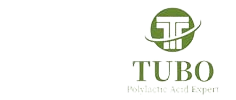In an increasingly demanding global market, businesses and consumers alike are searching for materials that go beyond the basics. They seek durability, sustainability, efficiency, and reliability—qualities that define DuPont paper. Known for its advanced engineering and performance, DuPont paper has become a market leader in various sectors ranging from industrial labeling to premium packaging.
This article highlights the key market selling points of DuPont paper, explaining why it stands out and how sellers can position it as a superior solution to meet the needs of modern industries.
1. Exceptional Durability
One of the most important features of DuPont paper is its exceptional strength. Unlike conventional paper, which tears easily and degrades when wet, DuPont paper is engineered to withstand harsh conditions.
Key selling points:
Tear-resistant even under pressure
Withstands repeated folding, stretching, or crumpling
Long-lasting even in high-traffic environments
This durability makes DuPont paper ideal for long-term applications such as industrial tags, outdoor signage, manuals, and labels that must remain intact for months or even years.
2. Waterproof and Weatherproof
Traditional paper fails in wet or outdoor environments, but DuPont paper excels. Thanks to its synthetic structure, it is fully waterproof and weather-resistant.
Why it matters:
Ideal for use in rainy, humid, or snowy conditions
No need for lamination or plastic sleeves
Maintains print clarity even after water exposure
This feature is especially appealing in industries like agriculture, construction, marine services, and outdoor advertising.
3. Chemical and Oil Resistance
DuPont paper resists damage from many chemicals, solvents, oils, and industrial fluids. This makes it a top choice for heavy-duty environments such as factories, laboratories, and oil refineries.
Applications include:
Labels on machinery or hazardous substances
Instruction guides for chemical handling
Tags on tools used in oily or dusty settings
This level of resistance increases safety, reduces maintenance, and ensures compliance in regulated environments.
4. Superior Print Quality
DuPont paper has a smooth, uniform surface that supports high-resolution printing, including:
Digital printing
Offset printing
Flexographic and gravure printing
UV and solvent-based inks
It offers:
Crisp, vibrant colors
Smudge-free performance
High-definition barcodes and QR codes
This makes it ideal for retail packaging, brand promotion materials, and luxury labels where visual impact is essential.
5. Versatile Applications Across Industries
Another major selling point is the sheer versatility of DuPont paper. It can be used in over a dozen major industries including:
Retail: Hang tags, garment labels, gift packaging
Logistics: Shipping labels, warehouse tags, barcodes
Healthcare: Sterilization pouches, wristbands, lab tags
Construction: Safety instructions, outdoor signs
Travel: Luggage tags, boarding passes, maps
Education: Durable flashcards, charts, manuals
Its ability to serve multiple sectors with a single product type helps reduce inventory complexity for suppliers and buyers.
